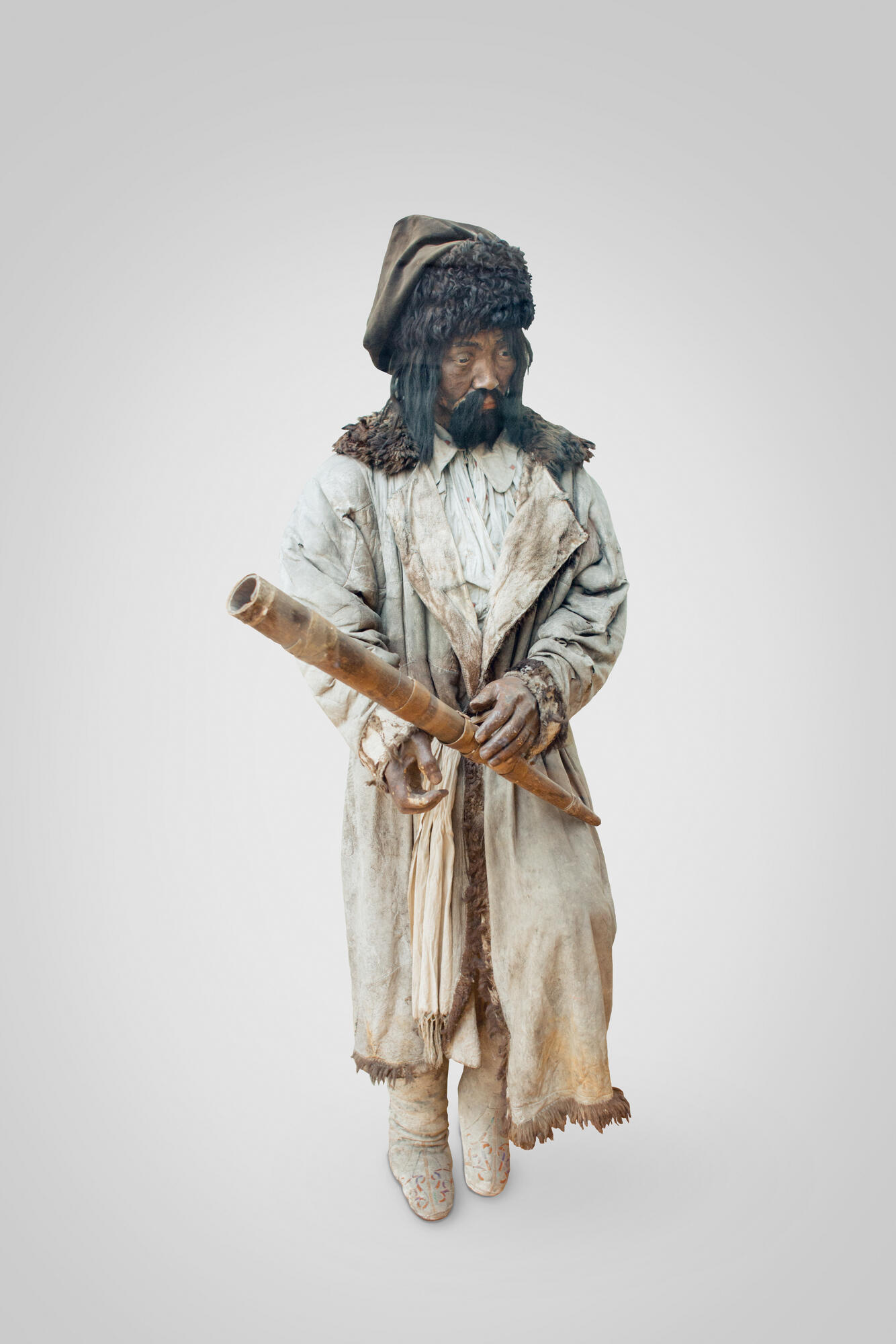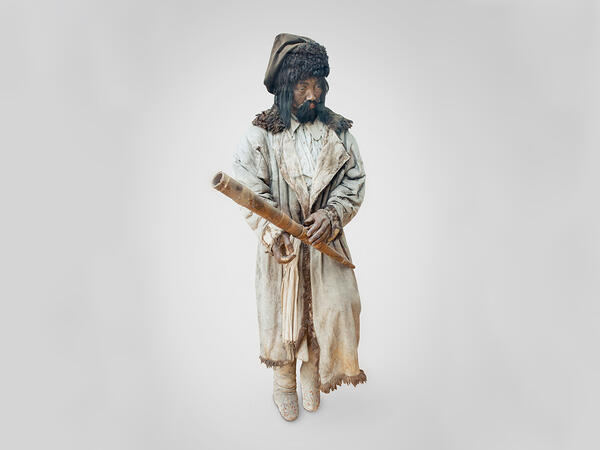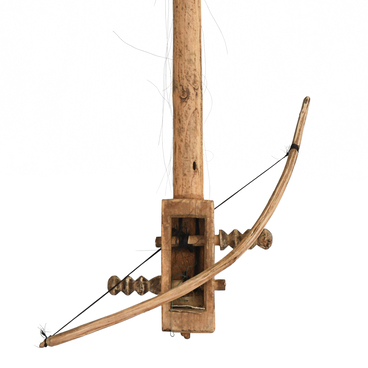In the 18th-19th centuries, hunting played a significant role in the economy of the indigenous peoples of southern Siberia, Khakasses, and Tuvans. Young men were accustomed to it from the age of 15, and by the time they came of age, they were able to go hunting on their own. Khakass women were not allowed to touch weapons, so there were no hunters among them.
Hunting was seasonal. The first fishing for fur-bearing animals began in September or October. In autumn the hunters rode into the taiga on horses and with huskies: the dogs tracked down the prey and barked to report where it is. In November, when the snow was deep, hunters would return home. The second hunting season lasted from December to the end of April. Hunters no longer took horses, but went on skis and pulled sleds with food supplies — narts.
Skis were lined with leather, so they do not slide back on steep climbs. With that device, it was possible to catch up with a maral running through the snow.
They would hunt the animals in teams of four or five people. Hunters used different traps and crossbows, and from the middle of the 18th century they also used firearms — flintlocks.
The food supply was divided equally among all the members of the artel, but each had his own gunpowder and lead. An experienced hunter led the group by whose name the entire hunting area was named. He supervised discipline and order in the artel, accepted the daily catch, and arranged a big treat in case of successful fishing.
Khakasses hunted squirrels, sables, red deer, bears, and birds. Since the sable would return along its trails, experienced hunters set many traps along its path and then return and gather their prey. Sometimes sables were smoked out of the hiding place into pre-set nets. The catch of a sable was valued at the same price as a hundred squirrels' carcasses.
Khakasses hunted marals in several ways. They could construct special traps with baits that would be slammed as soon as a reindeer went inside. In addition, in the fall, when the red deer were in a rut, a special trumpet pyrgy was sounded. It imitated the sounds of males challenging each other to a duel. Usually in this way, deer were lured at dusk, so that they could not see the hunter.
The Doll of a hunter appeared in the exposition of the museum in 1901. In 1898, the vice-chairman of the Russian geographical society Pyotr Semenov-Tyan-Shansky invited the Minusinsk public museum to take part in an exhibition in Paris. Four sculptures were created based on photographs of the indigenous population, which were taken by ethnographer Yevgeny Yakovlev. They depicted the shamanistic ritual over a sick old woman, where the hunter was an assistant to the shaman. The exhibit received a silver medal and a diploma.
After the exhibition, the ethnographic group of plaster figures was returned to the museum. In addition, in 2010, the Doll of a hunter became a separate exhibit. He is dressed in traditional hunting clothes: a shirt with a flap collar on one button, a fur coat, a hat with a fur cap, and on his feet boots with a floral ornament. The hunter holds pyrgy in his hands.
Hunting was seasonal. The first fishing for fur-bearing animals began in September or October. In autumn the hunters rode into the taiga on horses and with huskies: the dogs tracked down the prey and barked to report where it is. In November, when the snow was deep, hunters would return home. The second hunting season lasted from December to the end of April. Hunters no longer took horses, but went on skis and pulled sleds with food supplies — narts.
Skis were lined with leather, so they do not slide back on steep climbs. With that device, it was possible to catch up with a maral running through the snow.
They would hunt the animals in teams of four or five people. Hunters used different traps and crossbows, and from the middle of the 18th century they also used firearms — flintlocks.
The food supply was divided equally among all the members of the artel, but each had his own gunpowder and lead. An experienced hunter led the group by whose name the entire hunting area was named. He supervised discipline and order in the artel, accepted the daily catch, and arranged a big treat in case of successful fishing.
Khakasses hunted squirrels, sables, red deer, bears, and birds. Since the sable would return along its trails, experienced hunters set many traps along its path and then return and gather their prey. Sometimes sables were smoked out of the hiding place into pre-set nets. The catch of a sable was valued at the same price as a hundred squirrels' carcasses.
Khakasses hunted marals in several ways. They could construct special traps with baits that would be slammed as soon as a reindeer went inside. In addition, in the fall, when the red deer were in a rut, a special trumpet pyrgy was sounded. It imitated the sounds of males challenging each other to a duel. Usually in this way, deer were lured at dusk, so that they could not see the hunter.
The Doll of a hunter appeared in the exposition of the museum in 1901. In 1898, the vice-chairman of the Russian geographical society Pyotr Semenov-Tyan-Shansky invited the Minusinsk public museum to take part in an exhibition in Paris. Four sculptures were created based on photographs of the indigenous population, which were taken by ethnographer Yevgeny Yakovlev. They depicted the shamanistic ritual over a sick old woman, where the hunter was an assistant to the shaman. The exhibit received a silver medal and a diploma.
After the exhibition, the ethnographic group of plaster figures was returned to the museum. In addition, in 2010, the Doll of a hunter became a separate exhibit. He is dressed in traditional hunting clothes: a shirt with a flap collar on one button, a fur coat, a hat with a fur cap, and on his feet boots with a floral ornament. The hunter holds pyrgy in his hands.



